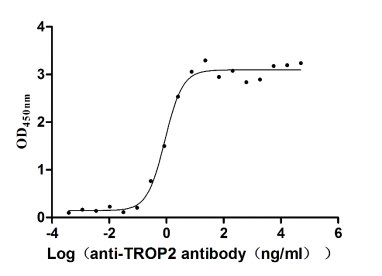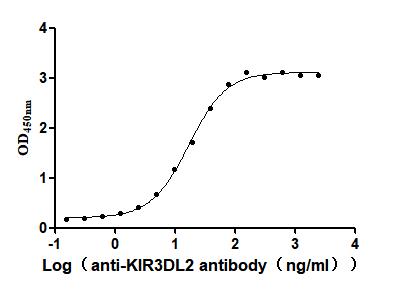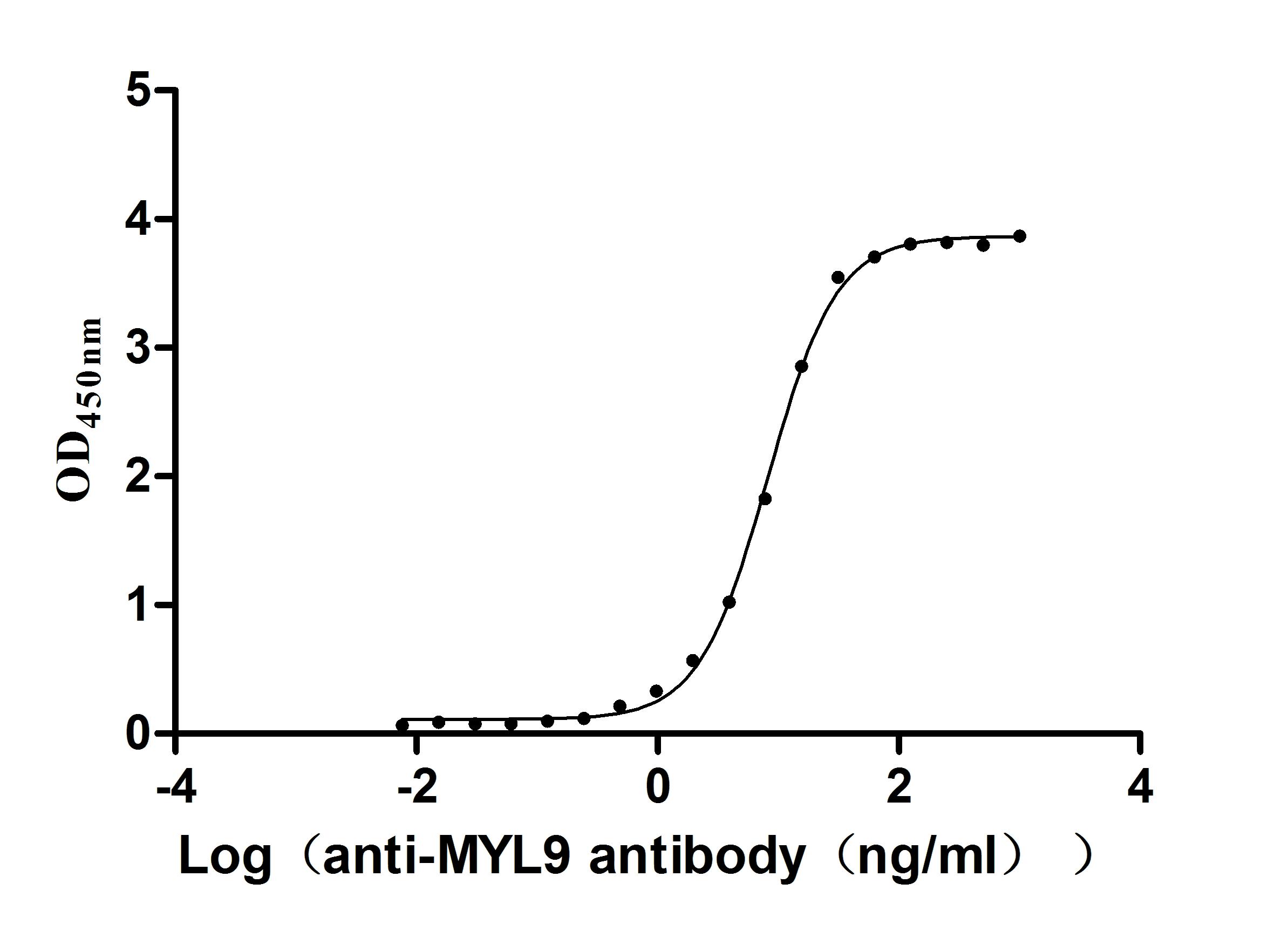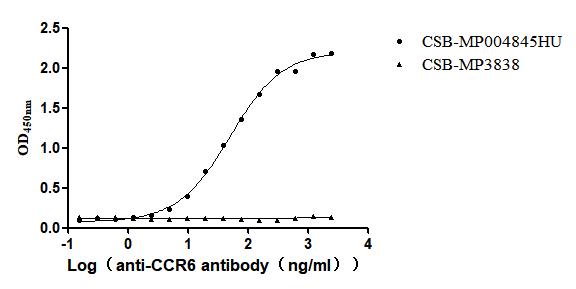Recombinant Mouse Amelogenin, X isoform (Amelx)
-
中文名称:Recombinant Mouse Amelogenin, X isoform(Amelx)
-
货号:CSB-YP001663MO
-
规格:
-
来源:Yeast
-
其他:
-
中文名称:Recombinant Mouse Amelogenin, X isoform(Amelx)
-
货号:CSB-EP001663MO-B
-
规格:
-
来源:E.coli
-
共轭:Avi-tag Biotinylated
E. coli biotin ligase (BirA) is highly specific in covalently attaching biotin to the 15 amino acid AviTag peptide. This recombinant protein was biotinylated in vivo by AviTag-BirA technology, which method is BriA catalyzes amide linkage between the biotin and the specific lysine of the AviTag.
-
其他:
-
中文名称:Recombinant Mouse Amelogenin, X isoform(Amelx)
-
货号:CSB-BP001663MO
-
规格:
-
来源:Baculovirus
-
其他:
-
中文名称:Recombinant Mouse Amelogenin, X isoform(Amelx)
-
货号:CSB-MP001663MO
-
规格:
-
来源:Mammalian cell
-
其他:
产品详情
-
纯度:>85% (SDS-PAGE)
-
基因名:Amelx
-
Uniprot No.:
-
别名:Amelx; AmelAmelogenin; X isoform; Leucine-rich amelogenin peptide; LRAP
-
种属:Mus musculus (Mouse)
-
蛋白长度:Full Length of Mature Protein
-
表达区域:17-210
-
氨基酸序列MPLP PHPGSPGYIN LSYEKSHSQA INTDRTALVL TPLKWYQSMI RQPYPSYGYE PMGGWLHHQI IPVLSQQHPP SHTLQPHHHL PVVPAQQPVA PQQPMMPVPG HHSMTPTQHH QPNIPPSAQQ PFQQPFQPQA IPPQSHQPMQ PQSPLHPMQP LAPQPPLPPL FSMQPLSPIL PELPLEAWPA TDKTKREEVD
-
蛋白标签:Tag type will be determined during the manufacturing process.
The tag type will be determined during production process. If you have specified tag type, please tell us and we will develop the specified tag preferentially. -
产品提供形式:Lyophilized powder
Note: We will preferentially ship the format that we have in stock, however, if you have any special requirement for the format, please remark your requirement when placing the order, we will prepare according to your demand. -
复溶:We recommend that this vial be briefly centrifuged prior to opening to bring the contents to the bottom. Please reconstitute protein in deionized sterile water to a concentration of 0.1-1.0 mg/mL.We recommend to add 5-50% of glycerol (final concentration) and aliquot for long-term storage at -20℃/-80℃. Our default final concentration of glycerol is 50%. Customers could use it as reference.
-
储存条件:Store at -20°C/-80°C upon receipt, aliquoting is necessary for mutiple use. Avoid repeated freeze-thaw cycles.
-
保质期:The shelf life is related to many factors, storage state, buffer ingredients, storage temperature and the stability of the protein itself.
Generally, the shelf life of liquid form is 6 months at -20°C/-80°C. The shelf life of lyophilized form is 12 months at -20°C/-80°C. -
货期:Delivery time may differ from different purchasing way or location, please kindly consult your local distributors for specific delivery time.Note: All of our proteins are default shipped with normal blue ice packs, if you request to ship with dry ice, please communicate with us in advance and extra fees will be charged.
-
注意事项:Repeated freezing and thawing is not recommended. Store working aliquots at 4°C for up to one week.
-
Datasheet :Please contact us to get it.
相关产品
靶点详情
-
功能:Plays a role in the biomineralization of teeth. Seems to regulate the formation of crystallites during the secretory stage of tooth enamel development. Thought to play a major role in the structural organization and mineralization of developing enamel.
-
基因功能参考文献:
- The maxillary incisors of Amelx-/- mutants indicated the increase of the frequency and number of labial grooves with aging. PMID: 29337060
- Results provide evidence that all three regions of amelogenin (N-terminus, C-terminus, central core) are required for enamel formation and structure. PMID: 26607574
- an involvement of LRAP in lipid-raft-dependent signaling pathways are mediated by flotillin-1. PMID: 27277399
- transcriptional activation of Amelx was associated with enhanced osteogenic differentiation, especially in the early stage of biomineralization PMID: 26709694
- LRAP is primarily monomeric in solution, suggesting that the monomeric species may be an important functional form of some amelogenins. PMID: 25449314
- AMELX may function as a growth factor-like molecules solubilized in the aqueous microenvironment. In jaws, it might play some role in bone physiology through autocrine/paracrine pathways, particularly during development and stress-induced remodeling. PMID: 24933156
- temporal/spatial localization of amelogenins with exon4 peptide and functional differences in HAP binding suggests unique properties of amelogenins containing exon4 cause specific enhancement of biomineralization of early-formed HAP at maturation stage PMID: 25792521
- Conversion to amelogenin expressing dental epithelial cells involved an up-regulation of the stem cell marker Sox2 and proliferation genes and decreased expression of mesenchymal markers PMID: 25122764
- Leucine rich amelogenin peptide alters ameloblast differentiation in vivo. PMID: 23747796
- the interaction of amelogenin with Grp78/Bip contributed to cell proliferation, rather than correlate with the osteogenic differentiation PMID: 24167599
- among amelogenins, M180 alone is sufficient for normal enamel mechanical properties and prism patterns, but that additional amelogenin splice products are required to restore enamel thickness. PMID: 24072097
- ERP expression follows defined developmental profiles; affects osteoblast differentiation, mineralization, calvarial bone development. with role in developing enamel matrix, ERPs retain conserved function related to bone biomineralization. PMID: 23625374
- The study investigates the structure, orientation, and dynamics of three regions in the N-terminus of the protein: L(15) to V(19), V(19) to L(23), and K(24) to S(28). Phosphorylation and ionic strength alter the LRAP-hydroxyapatite interface. PMID: 23477367
- Analyses of these data suggest that MMP-9 may be involved in controlling amelogenin processing and enamel formation. PMID: 22648084
- Amelogenin affected mandible morphology and incisor enamel formation, while enamelin only affected incisors, supporting the multifunctional role of amelogenin. PMID: 22759786
- analysis of daily rhythms of clock genes and Amelx in murine ameloblast cells PMID: 22653892
- Amelogenin molecules form complex 3D-structures with N-terminal alpha-helix-like segments and C-terminal PPII-helices. PMID: 21984897
- Alterations in the assembly (i.e. premature aggregation) of mutant amelogenins may have a profound effect on intra- and extracellular processes. PMID: 21540557
- Amelogenin assembly is a multistep hierarchical process and provides new insight into the control of enamel mineralization. PMID: 21597263
- Amelogenin promotes odontoblast-like MDPC-23 cell differentiation PMID: 21547453
- Amelogenin undergoes stepwise hierarchical self-assembly. PMID: 21825148
- Dlx2 and FoxJ1 physically interact and synergistically regulate the Dlx2, FoxJ1, and amelogenin promoters PMID: 21504905
- elevated levels of Notch 1 in developing molars. cells within masses express transgenic amelogenins; development of abnormal proliferations suggests communication between amelogenin producing cells and proliferating cells PMID: 20923441
- The presence of LRAP leads to changes in enamel appearance compared to enamel from knockout mice.[LRAP] PMID: 18701811
- data indicate that specific levels of Amelx and Dspp gene expression define whether mouse cytomegalovirus induces enamel agenesis or hypoplasia PMID: 20484882
- interactions between collagen and amelogenin might play an important role in the formation of the DEB providing structural continuity between dentin and enamel PMID: 20404336
- We hypothesize that intracellular protein-protein interactions mediated via the amelogenin tri-tyrosyl motif are a key mechanistic factor underpinning the molecular pathogenesis in this example of AI. PMID: 20067920
- self-assembly and apatite binding properties of amelogenin proteins lacking the hydrophilic C-terminal. PMID: 11852235
- Altered amelogenin self-assembly based on mutations observed in human X-linked amelogenesis imperfecta (AIH1). PMID: 11877393
- Polypeptides translated from alternatively spliced transcripts of the amelogenin gene, devoid of the exon 6a, b, c region, have effects on tooth germ development in culture. PMID: 12489164
- interaction with cytokeratin-5 in ameloblasts during enamel growth PMID: 12657653
- developmental regulated expression pattern is enhanced under vitamin-D-deficiency status and in a broader context may play an important role during ameloblast and odontoblast differentiation and function. PMID: 12667550
- a critical signaling molecule required for appropriate development of the periodontium PMID: 14653387
- specific amelogenin isoforms have effects on embryonic tooth development in vitro; DMP2 may play a role in the terminal differentiation of both ameloblasts and odontoblasts PMID: 15647828
- data supports the hypothesis that: (1) AMELX contains 2 additional exons; (2) ameloblasts and odontoblasts synthesize amelogenin 8/9; and (3) amelogenin splice variants may have unique functions during tooth formation. PMID: 15972588
- Conformational analyses of a recombinant mouse tooth enamel amelogenin using circular dichroism (CD), fluorescence, differential scanning calorimetry, and sedimentation equilibrium studies. PMID: 16284958
- during differentiation, dental epithelial cells utilize a unique mechanism for increasing the production of amelogenin, the reuptake of secreted amelogenin PMID: 16293627
- activated by synergism between C/EPBalpha and NF-Y PMID: 16595692
- mutations within conserved amelogenin domains could account for enamel variations preserved in the fossil record PMID: 16707492
- Analyses of amelogenin mRNA between control and Mmp20(-/-)mice revealed no differences in the splicing pattern. 3 previously unidentified amelogenin alternatively spliced transcripts are characterized. Exon-8-encoded isoforms are processed by MMP-20 PMID: 16998127
- Co-immunoprecipitation analyses identified that the carboxyl-terminal domain (residues 218-359) of C/EBPalpha is required for the C/EBPalpha-Msx2 protein-protein interactions. PMID: 17210130
- Female Amelx+/- animals showed significant reduction in optical retardation values when compared with the Amelx+/+ subgroup (p=0.0029). The secretory-stage enamel organic extracellular matrix of the Amelx-/- subgroup did not exhibit birefringence. PMID: 17364666
- C/EBPdelta activates the mouse amelogenin promoter and synergistically cooperates with nuclear factor Y, suggesting that C/EBPdelta can functionally substitute for C/EBPalpha to produce an enamel matrix competent to direct biomineralization PMID: 17704518
- demonstrate the protein region defined by amino acid residues 103-205 for CD63 interacts not only with amelogenin, but also with other enamel matrix proteins PMID: 17708745
- the ameloblastin 37-kDa isoform interacts with amelogenin during early tooth development. PMID: 17921454
- a single amelogenin protein was able to significantly rescue the KO phenotype and that one amino acid change abrogated this function during development. PMID: 18390542
- Results describe the functional activity of the [A-4] amelogenin gene splice product in newborn mouse ameloblasts. PMID: 18394981
- These findings suggest that the BMP2/4 contaminated during the purification process of enamel matrix derivative because of the avidity of amelogenin plays an important role in signaling pathway of calcification. PMID: 18515207
- The presence of LRAP leads to changes in enamel appearance compared to enamel from KO mice. PMID: 18701811
- Mice lacking expression of the AmelX, Enam and Mmp20 genes have been generated. PMID: 18714142
显示更多
收起更多
-
亚细胞定位:Secreted, extracellular space, extracellular matrix.
-
蛋白家族:Amelogenin family
-
数据库链接:
Most popular with customers
-
Express system: Mammalian cell
Species: Homo sapiens (Human)
-
Recombinant Human T-cell surface protein tactile (CD96), partial (Active)
Express system: Mammalian cell
Species: Homo sapiens (Human)
-
Recombinant Human Cannabinoid receptor 1 (CNR1)-VLPs (Active)
Express system: Mammalian cell
Species: Homo sapiens (Human)
-
Recombinant Human Claudin-6 (CLDN6)-VLPs, Fluorescent (Active)
Express system: Mammalian cell
Species: Homo sapiens (Human)
-
Recombinant Human Tumor-associated calcium signal transducer 2 (TACSTD2), partial (Active)
Express system: Mammalian cell
Species: Homo sapiens (Human)
-
Recombinant Human Killer cell immunoglobulin-like receptor 3DL2 (KIR3DL2), partial (Active)
Express system: Mammalian cell
Species: Homo sapiens (Human)
-
Recombinant Human Myosin regulatory light chain 12B(MYL12B) (Active)
Express system: E.coli
Species: Homo sapiens (Human)
-
Recombinant Human C-C chemokine receptor type 6(CCR6)-VLPs (Active)
Express system: Mammalian cell
Species: Homo sapiens (Human)


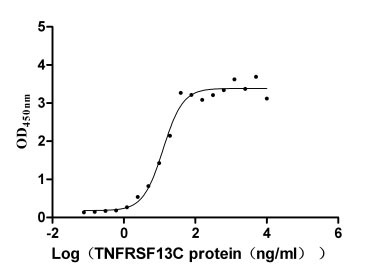
-AC1.jpg)
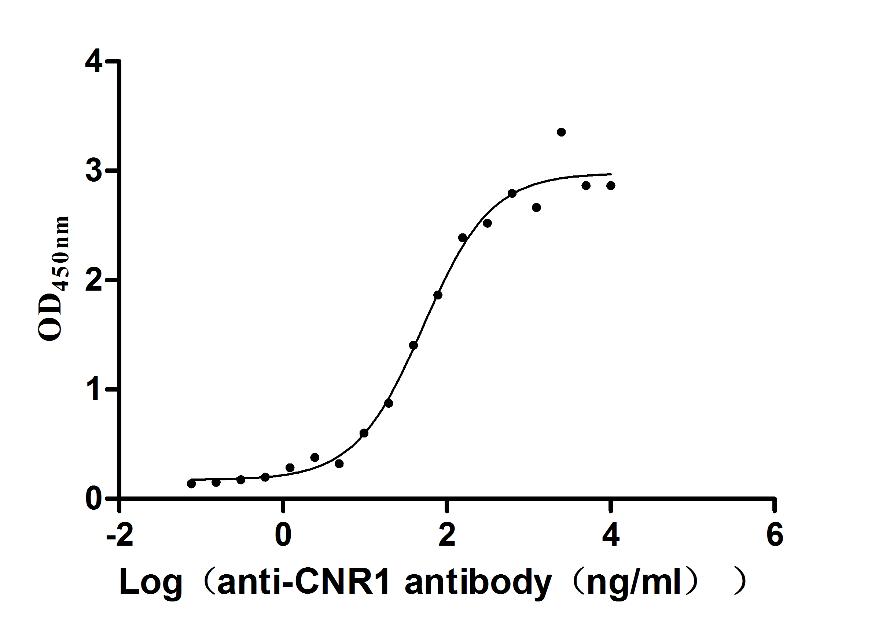
f4-AC1.jpg)
